

 The Accurate Reloading Forums
The Accurate Reloading Forums  THE ACCURATE RELOADING.COM FORUMS
THE ACCURATE RELOADING.COM FORUMS  Other Topics
Other Topics  Knives and Knife Making
Knives and Knife Making  Jim Hammond fighting and boar hunting knife
Jim Hammond fighting and boar hunting knifeGo  | New  | Find  | Notify  | Tools  | Reply  |  |
| one of us |
Gentlemen The Flesheather fighting knife by Jim Hammond. This knife could also be a great Boar hunting knife! What do you think? The blade is 9" and standard steel is 440C, optional steels are ATC34 and S30V. You can get this knife just the you want it but will have to wait for 3-4 years. Here are some information from Jims site: The Flesheaterâ„¢ began when a friend of mine asked his martial arts instructor, “What would you look for in a fighting knife, not a combat knife, but a pure fighting knife?†My friend was Master Chief Petty Officer Don Griffiths, who spearheaded the design development research for my SEALTACâ„¢ Series with USN Special Warfare (SEAL) personnel in 1981. Don’s martial arts instructor was Arsenio James Advincula, a world-renown instructor, featured in articles as well as on the cover of most of the major martial arts magazines. Advincula, a 7th degree black belt and member of the Black Belt Hall of Fame, began studying Escrima in 1946, Isshin-ryu in 1958, and Hindiandi Kung Fu in 1961. He retired as a Master Sergeant from the U.S. Marine Corps in April 1981. With over 56 years experience in the martial arts, with emphasis on their combat application, and his 24 year military service, Jim Advincula was well qualified to determine the key design components of a single-purpose fighting knife. Also, his martial arts training program was recently adopted by the U.S. Marine Corps. The first prototype was requested by Don during the middle of Desert Storm. During that time, he collected ideas and input from Advincula as well as from a number of Advincula’s senior students who made suggestions for several modifications which were incorporated into the design of the second prototype. Don was able to make two trips to my shop to work on the second prototype. It was during the first trip when the name became official. Months earlier, while accidentally experiencing the edge of the first prototype, Don had called the knife a real “Flesheaterâ€. The name stuck (pun intended), and carried over to the second prototype. During the first trip to my shop, Don and I worked on the handle design. Working out the design goal of the handle required his understanding of Jim Advincula’s knife fighting techniques and my understanding of what would and would not work when making a knife. The handle provides a secure grip in four positions, facilitating maximum fighting efficiency for three primary combative distances plus a forward working grip. In the forward grip, the forefinger is wrapped around the lower guard for maximum control for work; in first-position, the “modified hammer†grip is forward, “choked-up†against the guard; in second-position, the hammer grip is re-positioned toward the rear of the handle for maximum reach; in the extended mode, the hand shifts back one finger groove for chopping. Though the overall length of the knife is the same as the SEALTACâ„¢ I, the handle length is much shorter. This shorter length enables the modified hammer grip to be used without excess handle protruding from the back of the hand. Excess length in the pommel area would aid an opponent in neutralizing the range of motion of the knife hand. Advincula prefers the modified hammer grip because it provides a more secure grip than the traditional fencer’s grip. Jim Advincula emphasizes the thumb and first two fingers for providing a secure grip in Escrima. For this reason, two finger grooves were used in the design. If either of these two fingers is injured, the other still functions with a finger groove to provide a secure grip. These finger grooves were not limiting factors since Advincula’s particular knife fighting techniques do not incorporate or require the use of either a reverse or a rotated (upside down) grip to be used. Largo Mano Eskrima is a Filipino form of stick fighting which is easily adapted to fighting with a long blade. Jim Advincula’s knife fighting techniques were adapted from Eskrima for shorter blades (6-9 inches long) by practitioners of Filipino combat judo. These techniques were among the first techniques learned by Jim Advincula from his teachers. On the topside of the handle, about two inches from the guard, is a drop. This drop, combined with the handle contours, provides an area that serves to catch the webbing between the thumb and forefinger. This is the key to the security of the rear grip. The (second-position) grip provides about two inches of extra reach compared to the first position grip, and even more when compared to the forward grip position. The second-position grip assists in fighting an opponent who maintains distance while the first-position grip provides a shorter grip when an opponent moves in. The drop also follows the natural contour of the hand, when using the forward grip. This handle design must be held to fully appreciate the effectiveness of the tri-position grip when utilizing Advincula’s “modified hammer†grip. The top guard quillion is curved toward the back of the handle to ensure the handle is comfortable in the first-position grip. If the top guard did not curve slightly back, the webbing of the hand, when in the hammer grip, would be stretching to reach it, putting pressure on the first two fingers at the forward side of the finger grooves. The handle tends to make the Flesheaterâ„¢ look strange, but when you understand the purpose of this handle, and actually pick it up and adjust your grip back and forth, it give you an impression unlike any other knife. The Flesheaterâ„¢ is serious, serious about just one thing--knife-fighting. During the designing process, the question was posed to Jim Advincula, “How long should the blade length be?†He replied, “At least one inch longer than your opponent’s, but short enough to be carried without regard for the additional weight or bulk.†After evaluation, the blade length was established at nine inches. Coincidentally, the overall length of the Flesheaterâ„¢ (14 inches) is the same as the SEALTACâ„¢ I. The Flesheaterâ„¢ blade features a slightly curved lower edge. This edge design tends to “cut through†and maintain edge contact better than a straight edge. This flowing curve also adds to the serious look of the knife. In order to achieve maximum cutting efficiency, the blade is hollow ground with the main blade bevel having a 5†radius and the top grind a 3†radius. The knife is a full tang design utilizing 1/4†stock of either 440-C or ATS-34 stainless steel and a tapered tang. The handle is hourglass sculptured with a pommel swell, a palm bulge and an outflowing front end that provides support in the two forward grip positions. This front of the handle can also be left unflared for slimmer profile for undercover carry situations. The offset top edge of the Flesheaterâ„¢ incorporates a double-step design, serving as a median between the spear and clip points. This styling allows for proper blade geometry in both grind configuration and retained point strength, both critical factors in a fighting knife. The area on the blade back between the rear of the bevels and the guard face allows a hand to be positioned along the top of the blade for reinforcing a close-quarter cutting stroke. For this application, the contact area where the hand is placed in front of the guard has forty teeth per inch serrations for excellent non-slip control. The Flesheaterâ„¢ comes standard with a 3-carry mode kydex sheath (vertical high-ride, horizontal along the back, and canted cross-draw), with up to 6 modes optional. Optional is three vertical carry heights with a secondary retention strap and dual leg straps, plus a vertical underarm carry with a shoulder rig. A slimmer front-breakaway shoulder rig kydex sheath system is also available as an option. The Flesheaterâ„¢ plays a major role in the 1994 action novel, The Reckoning, by James Byron Huggins. One editor said, “This book does for knife fighting what Tom Clancy did for submarine warfare.†The Flesheaterâ„¢ knife/sheath combination is as specialized and researched a fighting knife design as can be found anywhere. The Flesheater is a knife designed for people with specialized training whose area of operation requires a knife of this caliber. When coupled with the highly refined knife fighting techniques of A.J. Advincula, the Flesheaterâ„¢ is a superlative weapon of choice. 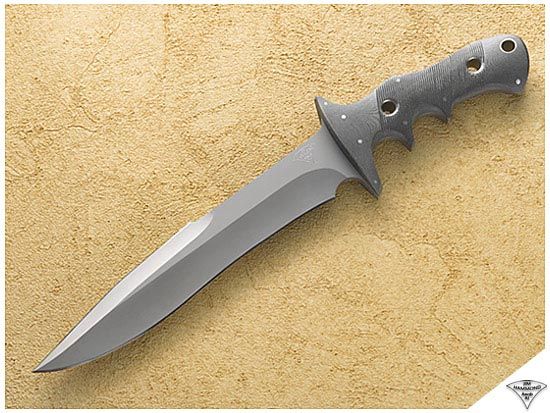 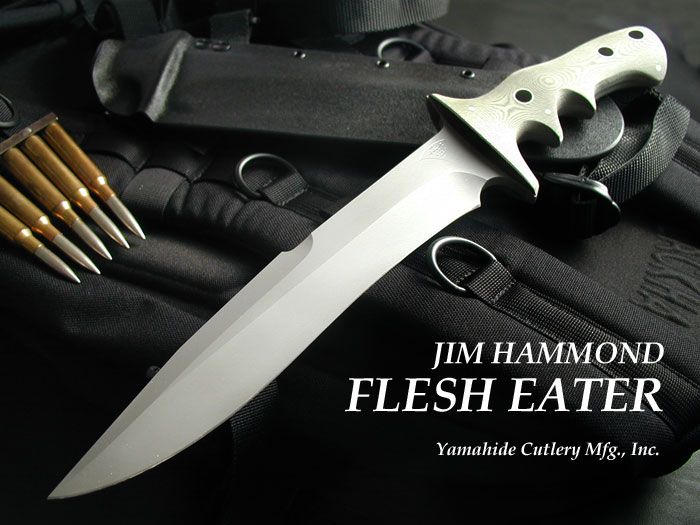 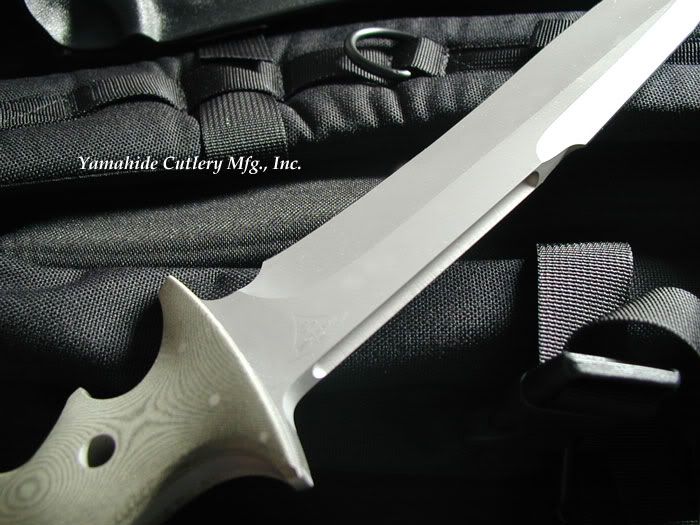 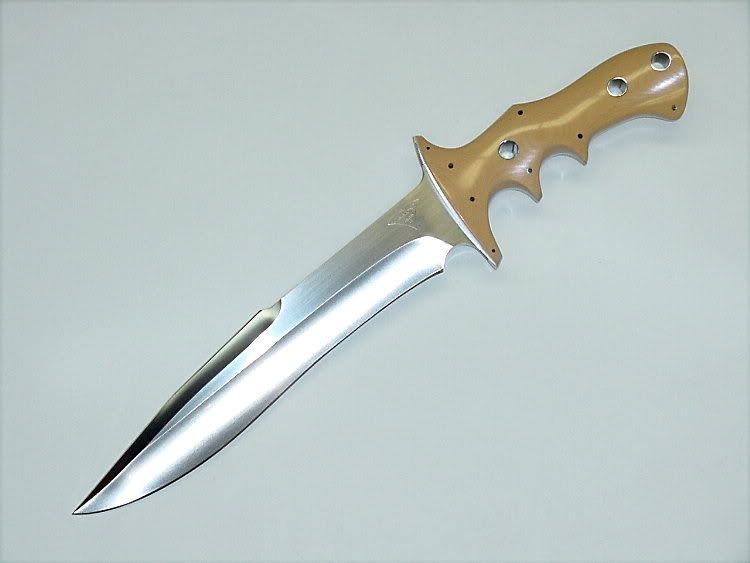 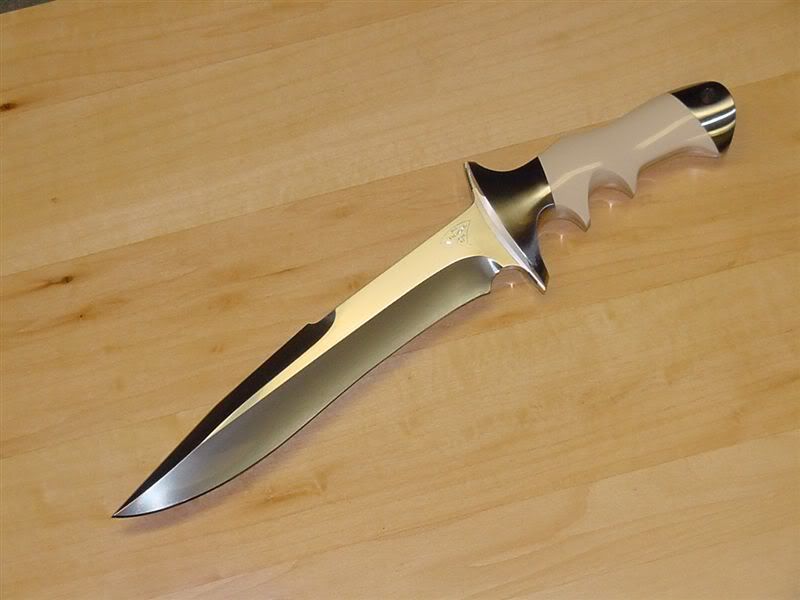 Always always use enough... GUN & KNIFE | ||
|
| one of us |
My friend congratulations for this excellent post ,this knife is just perfect for hog hunting ,i remember your teachings of escrima.Do you know that buzos tacticos and commandos anfibios fougth in the falklands .juan www.huntinginargentina.com.ar FULL PROFESSIONAL MEMBER OF IPHA INTERNATIONAL PROFESSIONAL HUNTERS ASOCIATION . DSC PROFESSIONAL MEMBER DRSS--SCI NRA IDPA IPSC-FAT -argentine shooting federation cred number2- | |||
|
| one of us |
Juan This knife is perfect The grip is awesome and the 9 inch blade grinded perfect for killing both beast and man. I am no expert on the Falklands war but will look into this when time permits. I like all frogmen units Cheers, André Always always use enough... GUN & KNIFE | |||
|
| one of us |
these are SF units of argentine in malvinas war.ARMY COMMANDO COMPANY 601 AND 602,AIR FORCE GOE ,NAVY BUZOS TACTICOS AND COMANDOS ANFIBIOS ,GENDARMERIE ALACRAN,PREFECTURE ALBATROS .We dindt used the parachutes and mountain regiments because Chile movilisized troops to the frontier .Juan www.huntinginargentina.com.ar FULL PROFESSIONAL MEMBER OF IPHA INTERNATIONAL PROFESSIONAL HUNTERS ASOCIATION . DSC PROFESSIONAL MEMBER DRSS--SCI NRA IDPA IPSC-FAT -argentine shooting federation cred number2- | |||
|
| Powered by Social Strata |
| Please Wait. Your request is being processed... |
|
 The Accurate Reloading Forums
The Accurate Reloading Forums  THE ACCURATE RELOADING.COM FORUMS
THE ACCURATE RELOADING.COM FORUMS  Other Topics
Other Topics  Knives and Knife Making
Knives and Knife Making  Jim Hammond fighting and boar hunting knife
Jim Hammond fighting and boar hunting knife

Visit our on-line store for AR Memorabilia

